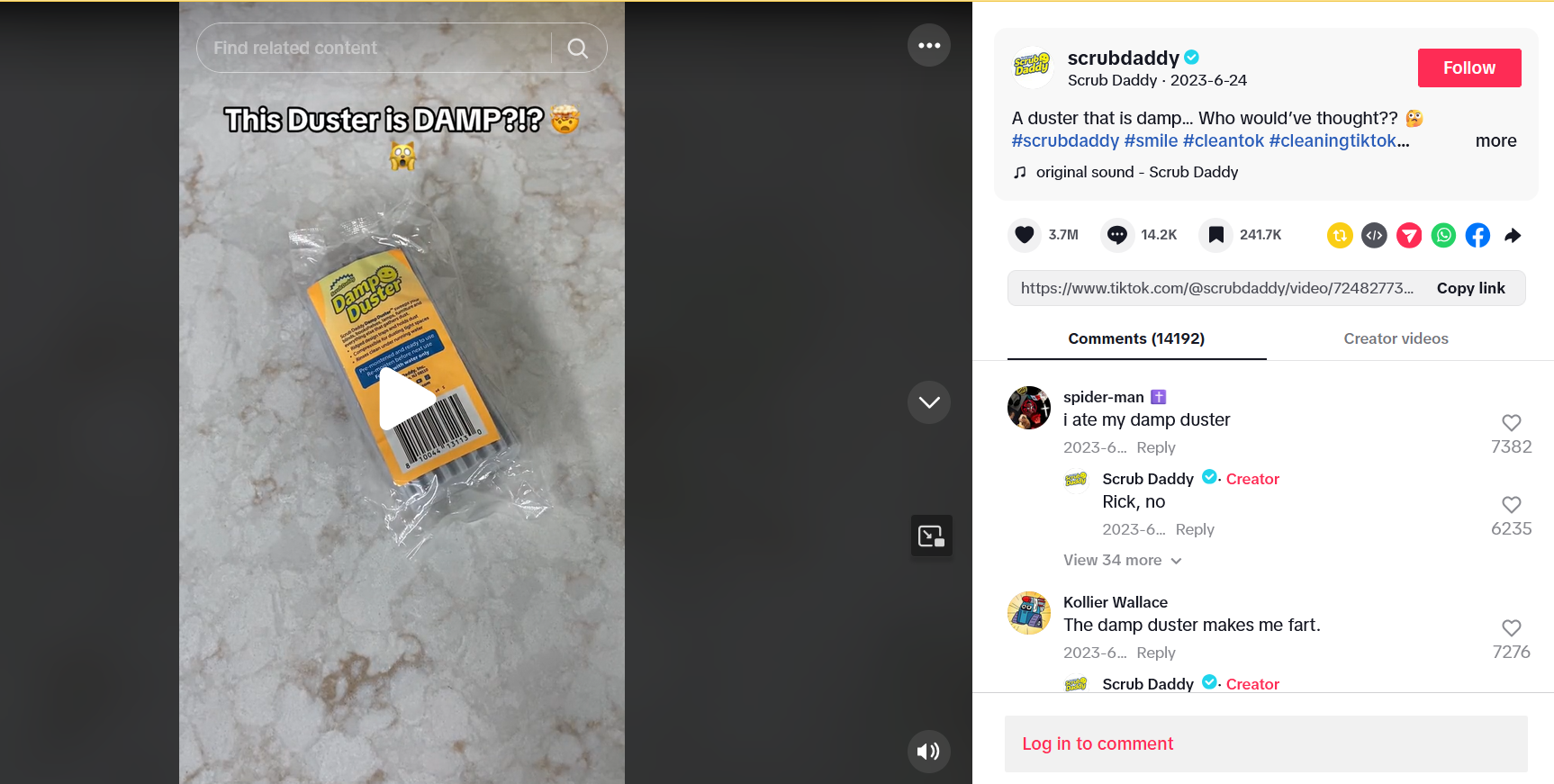Introduction
When growing a business, which comes first: the brand or the product?
Understanding the relationship between your brand and product marketing can be vital to your business and marketing strategies. While there is no simple answer to this question, one thing is clear: effective product marketing is essential to successful branding, and vice versa.
Coca-Cola, Google, Amazon, and Nike are the most prominent brands that have demonstrated this. The symbiotic relationship they've established between their brands and products helps them sustain their success in the market.
So, how can you do the same?
Read on as we tackle the vital roles of product and brand marketing in expanding your business and achieving other objectives.
Defining Product Marketing
What Is Product Marketing?
Product marketing entails crafting the image of your product or service offerings to entice potential customers and convince them to purchase.
It requires a great understanding of your target audience and their problems so you can demonstrate how your product can solve them.
People in charge of product marketing are expected to be proficient in data analysis, market intelligence, and developing a branded go-to-market strategy. Excellent communication skills are vital to engaging with customers, non-marketing team members, and stakeholders. They also have to be agile to work in cross-functional environments.
Why Product Marketing Matters?
Product marketing is an excellent way to identify and address gaps and challenges in your marketing, sales, and product teams. A concerted effort between teams can also improve their workflow management.
Product marketing also helps create messaging that resonates with your target audience and positions your product to stand out from your competitors. Finally, it can encourage conversations about ways your team can balance resource constraints and innovative marketing strategies to achieve maximum results.

Samsung spotlights the waterproof capabilities of its foldable smartphone in this product ad. Image via Ads of the World
To summarize, the main goals of product marketing are:
- Position your branded product so it stands out from competitors.
- Get the right branded message out that will attract potential buyers.
- Creating a marketing strategy across multiple channels to get your products out.
Product marketing piques the interest of your audience and ensures that the product meets their needs.
Defining Brand Marketing
What Is Brand Marketing?
Brand marketing employs a more holistic approach than product marketing. It involves promoting the company—its people, products, and beliefs—by creating a brand identity that people feel connected to.
In effect, meaningful connections bloom, encouraging awareness and brand loyalty.
Like product marketing, your brand marketing team needs data-driven people relentlessly focused on understanding your customers. They can effectively analyze market trends and customer behavior, collaborate across departments, and ensure consistency in branding. Most importantly, they are adept at crafting and implementing brand strategies that drive business growth.
Why Brand Marketing Matters?
Behind every big business in the world—McDonald's, Coca-Cola, Apple, etc. — is an excellent brand marketing strategy. Think of brand marketing as the gateway to improved brand awareness, recognition, trust, and loyalty.
It helps businesses establish a highly recognizable identity that can reinforce their reputation by highlighting their uniqueness. Data from the Edelman Trust Barometer report shows that four out of five buyers are likelier to purchase from trustworthy brands.
Finally, it leverages storytelling and customer-centric messaging that touches hearts. It encourages brands to take a more significant role by advocating for societal causes that resonate with their community. This branded yet authentic approach has a more substantial impact in the long run.
Product Marketing vs Brand Marketing Differences: A Side-by-Side Comparison
Below are the marketing differences between brands and products you should consider.
| Key Differences | Product Marketing | Brand Marketing |
|---|---|---|
| Scope and Focus |
|
|
| Goals and Objectives |
|
|
| Messaging and Communication |
|
|
| Audience Engagement and Targeting |
|
|
| Timeline and Strategy |
|
|
Scope and Focus
Product marketing leverages special features of products that make them unique and stand out. It explains the benefits of availing of them and promotes them through ads and other marketing efforts. Meanwhile, brand marketing is all about promoting the identity of the company. In addition to selling branded products to customers, it aims to build a loyal customer base by evoking strong emotions that motivate and inspire buyers.
Goals and Objectives
Product marketing's ultimate goal is to improve the bottom line. Strategic marketing campaigns can boost the demand for specific products and increase sales. Brand marketing's goals and objectives are long-term. They take time to achieve and focus mainly on building a solid and recognizable brand.
When setting goals and objectives, it is essential to use the SMART framework. They should be specific, measurable, attainable, relevant, and timely. Doing so ensures you can set and prioritize goals and objectives significantly impacting your business. That said, how you allocate your resources is also detrimental to the success of your marketing strategies.
Messaging and Communication
Product and brand marketing vary in messaging and communication depending on their intent. For instance, you can expect more factual information, statistics, and other vital data highlighting a product's features. These could be branded testimonials, unboxings, demos, and infographics.
On the other hand, brand marketing gets through to customers by cultivating a relationship and evoking powerful emotions. A start-up shop that sells organic daily essentials may share stories of farmers and the team behind them as part of its branded efforts, demonstrating the company's values and mission. It aims to inspire and entice its audience to be part of its community.
Audience Engagement and Targeting
Product marketing is quite specific when approaching and engaging with the audience. It identifies pain points that a brand's products or services can address, which it then uses to formulate a message and choose the appropriate marketing mix.
Meanwhile, brand marketing has a broader audience. It prioritizes marketing strategies that help etch the brand in customers' minds and form a high level of trust. It also focuses on finding people who share the same values as the brand. In the long run, brand marketing uses engagement tactics that result in loyal customers who can also become brand advocates.
Timeline and Strategy
Product marketing and brand marketing vary significantly in their timelines and strategies.
Product marketing can last depending on the duration of a marketing campaign. We're talking for weeks to months about whether you are launching a new product.
In comparison, brand marketing is long-term and has no specific end date. Instead, it evolves and adjusts branded efforts to changing demands and perceptions.
Product marketing resorts to tactics with immediate results, like investing in targeted ads, branded road shows, and product launches. Brand marketing relies on strategies that build and strengthen relationships with customers. An example is a clothing brand that initiates sustainability efforts for its eco-conscious market.
How Product and Brand Marketing Work Together?
Product and brand marketing may have different scopes, but they can be leveraged in tandem to achieve long-term business success.
Integrating Product Messaging and Brand Values
When crafting product messaging, think of your brand values as its foundation.
LEGO is an excellent example of this concept, with its core values centered on creativity, limitless imagination, and fun. With this in mind, LEGO has launched the Rebuild the World campaign, encouraging its audience to think outside the box and create a better, kinder, and more fun world.
The branded campaign features the flexibility of LEGO bricks with its characters, objects, and animals. Some can rotate 360 degrees. They are also available in various colors, shapes, forms, and sizes.
Of course, this can be a tedious process before you get it right. But with a deep understanding of your audience, a clear definition of your brand identity and values, and a solid value proposition, you can create key messages that reflect your brand values and product features.
Creating Synergy for Long-Term Success
Product and brand marketing can work together to help a company succeed. And you can do so when you have a good grasp of their roles and importance.
Just look at Nike, a brand that consistently inspires consumers with its motivational and heart-touching campaigns. The brand also produces running shoes using the most innovative technology and design.
Scrub Daddy Case Study
Let's examine Scrub Daddy's product and brand marketing strategies to understand better how they can work together to drive company growth.
Product Marketing
It is often said that your marketing strategy is only as good as your product. And this is precisely what Scrub Daddy, a cleaning product company, embodies.
Say goodbye to hours of soaking your dishes to remove hard stains. The branded product design featuring a smiley face also makes it stand out. With Scrub Daddy's special polymer foam sponge, the brand has become one of the best in its industry.

Scrub Daddy overhauls its product look by adding a smiley face. Image via Scrub Daddy
Since its launch, the brand has expanded its product line. In addition to scrubbers and sponges, it carries branded cleaning creams, gels, dish soaps, and paste. You can also find mops, wands, and other cleaning materials.

Scrub Daddy expands its product line beyond sponges. Image via Scrub Daddy
To increase visibility, the company displays its branded products in all leading grocery stores and retailers in the United States. You can easily find them at Walmart, Target, CVS, and The Home Depot.
Finally, Scrub Daddy boasts 100% eco-friendly and compostable products, which sets them apart from usually harmful cleaning agents. It blends non-toxic and plant-based formulations to ease the minds of every sustainable buyer.
Brand Marketing
Scrub Daddy got a considerable headstart when its founder appeared on the popular television show Shark Tank. With its promising products, the brand was picked up by Lori Greiner, the queen of QVC.
Capitalizing on this partnership, the brand has undergone a significant product design overhaul, including the simple but effective addition of the smiley face. The smiley face perfectly captures the brand's fun side, making it more appealing and relatable to consumers—young and old.
Soon, it expanded its presence online through social media, where the brand actively engages with its followers. Scrub Daddy was able to tap the younger market with its humorous, creative, and relatable branded content, especially on TikTok! Scrub Daddy also collaborated with other brands like Duolingo and Dunkin' Donuts.

Scrub Daddy goes viral online for its funny reels. Video via TikTok

Scrub Daddy introduces its Damp Duster through informative product demo. Video via TikTok
All these branded efforts have made this humble sponge business an icon. And it seems like it will remain number one in its industry! In 2023, Scrub Daddy and Unilever partnered for its global expansion.
Choosing the Right Marketing Approach
Knowing when to use the right marketing approach can lead to decisions that can effectively reach your target audience. While each approach serves distinct purposes, they work hand in hand, paving the way for success.
If you're looking to launch a new product or boost sales for an existing one, then product marketing is your best bet. You can highlight features that set your products and services apart from competitors. You can also host online and offline events to encourage curiosity and engagement among your target audience.
Brand marketing is the right approach to building and strengthening customer relationships and creating a positive perception. For instance, develop a brand visual that genuinely reflects your identity and resonates with your audience. Craft memorable taglines encapsulating what your brand stands for. You can also leverage technology to produce innovative content and connect with your community.
Now that you better understand product and brand marketing, it's time to take the next step by crafting the right strategy. Work with a reliable brand strategy company and help your business take flight!
Oct 25, 2024
